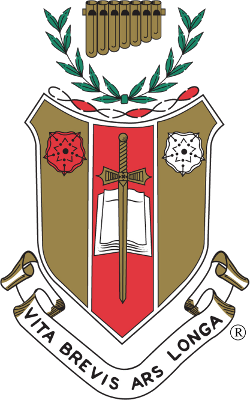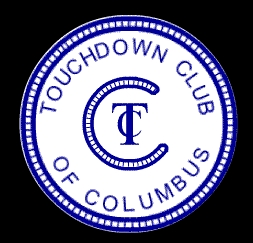
The League of American Bicyclists (LAB), officially the League of American Wheelmen, is a membership organization that promotes cycling for fun, fitness and transportation through advocacy and education. A Section 501(c)(3) nonprofit organization, the League is one of the largest membership organizations of cyclists in the United States.

Sigma Alpha Iota (ΣΑΙ) is a national music fraternity. Formed to "uphold the highest standards of music" and "to further the development of music in America and throughout the world", it continues to provide musical and educational resources to its members and the general public. Sigma Alpha Iota operates its own national philanthropy, Sigma Alpha Iota Philanthropies, Inc. Sigma Alpha Iota is a member of the National Interfraternity Music Council and the Professional Fraternity Association.
The 1989 NCAA Division I-A football season ended with Miami winning its third National Championship during the 1980s, cementing its claim as the decade's top team, winning more titles than any other program.
The 1985 NCAA Division I-A football season saw the Oklahoma Sooners, led by head coach Barry Switzer, win the national championship.
The 1971 NCAA University Division football season saw Coach Bob Devaney's Nebraska Cornhuskers repeat as national champions. Ranked a close second behind Notre Dame in the preseason poll, Nebraska moved up to first place the following week, remained there for the rest of 1971, and convincingly won the Orange Bowl 38–6 in a No. 1 vs. No. 2 game against Alabama.
This is an incomplete list of historic properties and districts at United States colleges and universities that are listed on the National Register of Historic Places (NRHP). This includes National Historic Landmarks (NHLs) and other National Register of Historic Places listings. It includes listings at current and former educational institutions.

The Touchdown Club of Columbus was founded in Columbus, Ohio, in 1956 by Sam B. Nicola at the request of state auditor James A. Rhodes, who later became governor of the state. Nicola served as the club's president until his death in 1993. More than a decade later, his son Sam Nicola Jr. took over the Touchdown Club. On January 22, 2020, the president of the Touchdown Club of Columbus, Curt Boster, announced on the club's Facebook page the cancellation of the awards, citing difficulty of maintaining the event without a title sponsor.
The 1974 NCAA Division I football season finished with two national champions. The Associated Press (AP) writers' poll ranked the University of Oklahoma, which was on probation and barred by the NCAA from postseason play, No. 1 at season's end. The United Press International (UPI) coaches' poll did not rank teams on probation, by unanimous agreement of the 25 member coaches' board. The UPI trophy went to the USC.

The 1923 college football season saw several teams finish their seasons unbeaten and untied. As such, numerous schools claim a national championship for the 1923 season. Illinois and Michigan, both members of what is now the Big Ten Conference, finished with records of 8–0 and were selected as national champion by multiple selectors. Illinois featured break-out star Red Grange. Ivy League teams Yale and Cornell also had undefeated seasons. Cornell was selected as national champion by one selector.
The 1954 college football season saw three teams finish unbeaten and untied, with Ohio State Buckeyes and the UCLA Bruins sharing the national championship as the No. 1 picks of the AP Poll and the UPI Poll, respectively. Although the winners of the Big Ten and the Pacific conferences normally met in the Rose Bowl, a "no repeat" prevented the two champions from meeting. UCLA, which had been in the Rose Bowl earlier in the year, was replaced by conference runner-up USC.
The 1952 college football season ended with the unbeaten Michigan State Spartans (9–0) and Georgia Tech Yellow Jackets (12–0) each claiming a national championship from different polls. Michigan State finished first according to two of the "wire service" polls, which both placed Georgia Tech second. Georgia Tech was first in the International News Service poll. UP and INS merged in 1958 to form UPI.
The 1930 NCAA Track and Field Championships was the ninth NCAA track and field championship. The event was held at Stagg Field in Chicago, Illinois in June 1930. The University of Southern California won the team title. The highlight of the meet was a new world record in the 100-yard dash, as Frank Wykoff ran the event in 9.4 seconds. Wykoff's time broke the prior world record of 9.5 seconds set by Eddie Tolan.
The 1926 NCAA Track and Field Championships was the fifth NCAA track and field championship. Athletes representing 65 universities participated in the event, which was held at Soldier's Field in Chicago, Illinois in June 1926. The meet was called "the college Olympics of America."
The 1931 NCAA Track and Field Championships was the ninth NCAA track and field championship. The meet was held at Stagg Field in Chicago, Illinois in June 1931. Athletes from 80 universities and colleges participated in the meet.
The 1932 NCAA Track and Field Championships was the ninth NCAA track and field championship. The meet was held at Chicago, Illinois in June 1932.
The 1933 NCAA Track and Field Championships was the twelfth NCAA track and field championship. The meet was held at Chicago, Illinois in June 1933.




